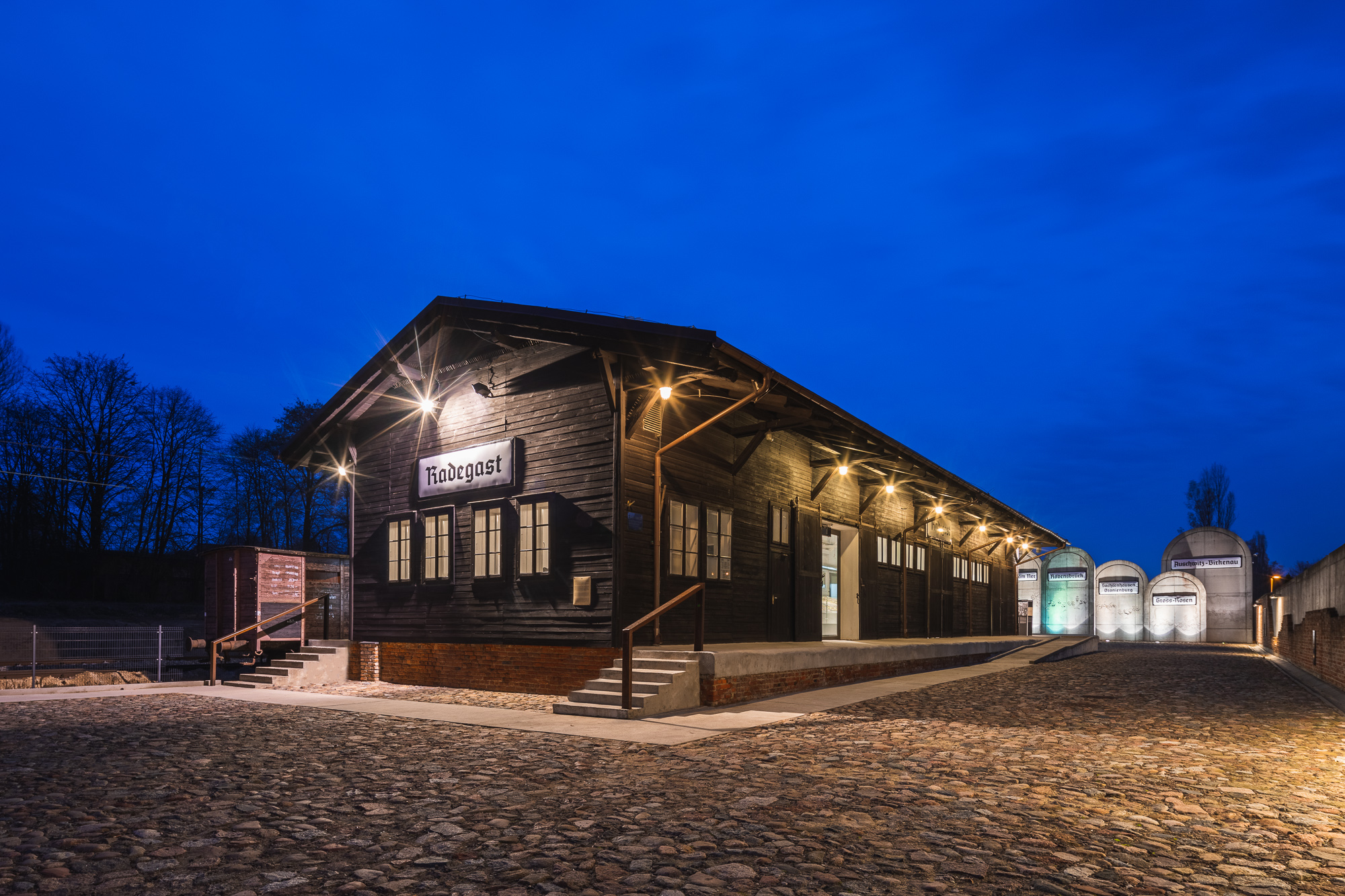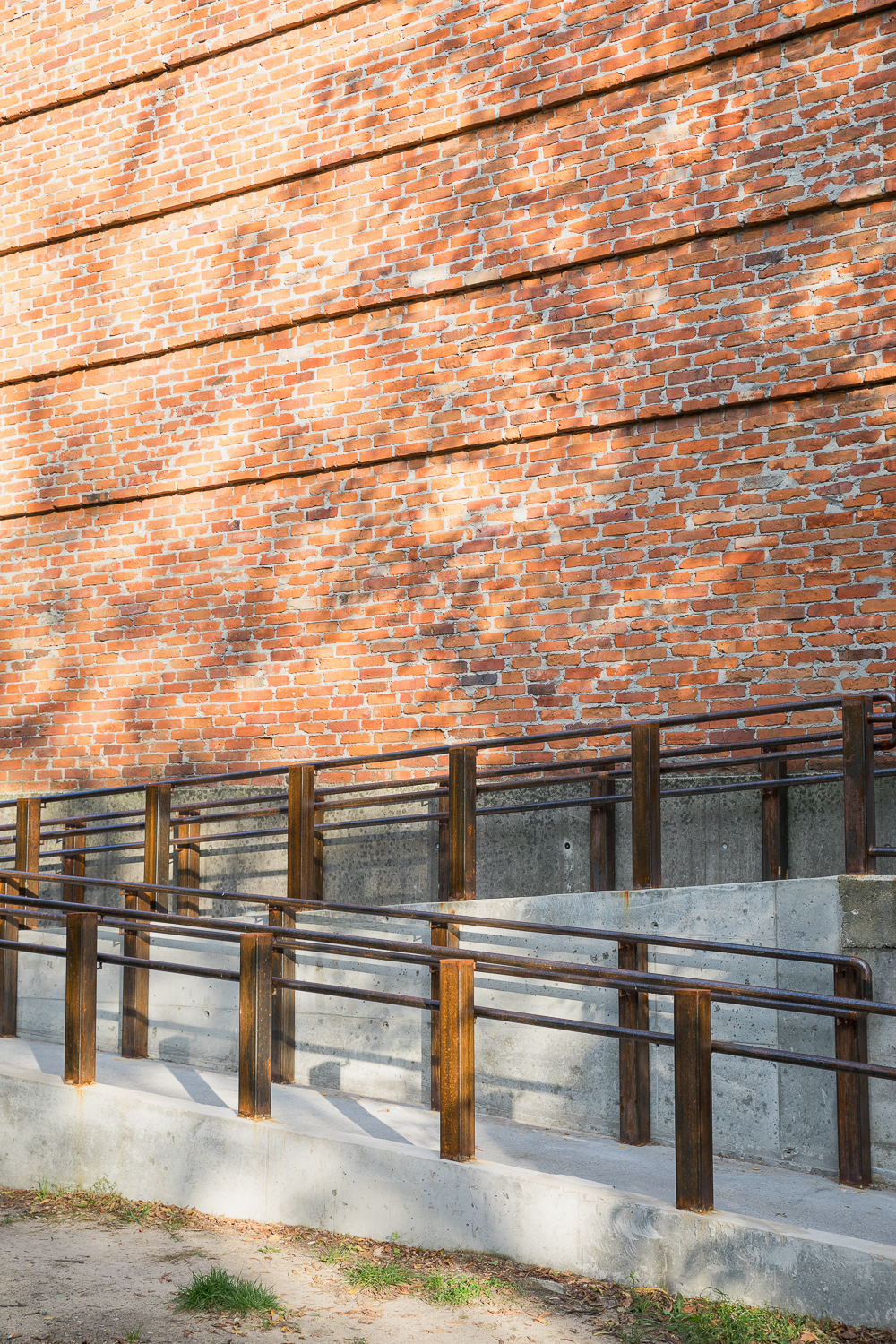

Museum of Independence Traditions –Radegast Station Branch
Investor: Museum of Independence Traditions (Muzeum Tradycji Niepodległościowych)
Location: 12 Pamięci Ofiar Litzmannstadt Getto St, Łódź
Realization: 2018-2019
Team: Karolina Taczalska, Maciej Taczalski, Mateusz Cyganek, Katarzyna Komoń, Wojciech Stępień, Maria Michnowska
The main assumption of the project implemented by us in 2018 was to adapt the building entered in the register of monuments to the new exhibition and administrative needs. As part of the project, a thorough renovation of the administration and exhibition building of the Museum of Jewish Martyrology – Radegast was carried out, along with the roof insulation and the “Tunnel of the Deported” monument. The building's heating was installed and the installations were replaced. Works related to land development were aimed at improving the existing condition and adapting the infrastructure for use by disabled people. A slipway was built to allow access to the Hall of the Towns from the north-west, as well as a concrete path leading to the station building. Finishing details and elements of small architecture, including a model of the entire complex for the blind, were designed in a raw, ascetic style referring to the buildings of the Litzmannstadt Ghetto Holocaust Memorial. This is emphasized by the materials used, such as concrete, demolition bricks or corroded steel profiles.
The Radegast station (“Marysin”) was established in 1925 during the construction of a railway connection between Widzew and Zgierz. A year later, two viaducts were built and tracks were laid. Initially, the station served as a freight passing passage stretching between today's Strykowska Street and Stalowa Street. The station building was completed in 1930.


During World War II, the station was incorporated into the Łódź Ghetto (July 1, 1940) under the name of Ghetto Transshipment Station in Radogoszcz (Verladebanhof Getto-Radegast). During the occupation, the station was a transshipment point for transports of food, fuel, raw materials for the ghetto population and workplaces, as well as products manufactured in the ghetto. The Radegast station served as the Umschlagtplatz of the Łódź ghetto.

In 2005, the building was transformed into a memorial complex, which is a place of remembrance for the victims of the Łódź ghetto. It was extended with the Litzmannstadt Ghetto Holocaust Memorial, designed by Czesław Bielecki DiM'84 Dom i Miasto Sp. z o. o. The complex quickly became one of the facilities most frequently visited by tourists in Łódź.









